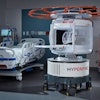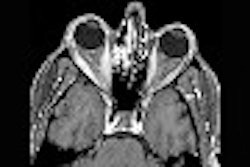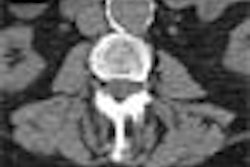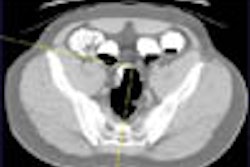Brain: Top 100 Diagnoses by Anne G. Osborn
Elsevier Science, St. Louis, 2002, soft-cover, $49.95; PDA software, $69.95.
The PocketRadiologist series has become quite popular with radiology residents and others seeking quick information. I was excited by the opportunity to review the most recent edition on brain imaging, edited by Dr. Anne Osborn. I have been a fan ever since I attended her lectures at the Armed Forces Institute of Pathology in the summer of 2000. She is truly one of the most accomplished physicians in the field of neuroradiology.
Unfortunately, the book didn’t quite live up to expectations. Although the text is well organized, it is almost too concise and limited in its scope. It seems at once too abbreviated for the beginner, and somewhat trivial for an experienced neuroradiologist.
The 300-page book is divided into 11 sections covering trauma, infection, neoplasm, and metabolic diseases. Vascular disorders are also addressed including stroke, arteriovenous malformations, and aneurysms.
The text is presented in bullet format for maximum brevity. Key facts regarding each entity are followed by information on imaging findings, differential diagnosis, and when applicable, a short discussion of pathology and clinical issues. Each discussion concludes with a short list of helpful references. A brief alphabetized index aids in locating entities within the text.
The first chapter includes several commonly encountered forms of brain injury. The salient features of each condition are presented. Several typical examples are presented with high quality images as well as illustrations. This chapter would most benefit junior radiology residents covering trauma CT in the emergency department. Although the information is somewhat truncated, the most important facts are stressed.
The chapter dealing with infection begins with a general summary of meningitis, encephalitis, empyema, and abscess. There are short but well organized discussions on pathophysiology. The remainder of the chapter includes a few of the more commonly encountered central nervous system infections, such as tuberculosis and cystocercosis. HIV disease is discussed as a separate topic with reference to the immunocompromised host. Several cursory references are made regarding very rare parasitic infections. A brief discussion of acute disseminated encephalomyelitis (ADEM) is considered here, which may have been more appropriately included under white matter and degenerative disease.
The neoplasm chapter is the longest and strongest portion of the text. The authors have included a very comprehensive list of the most commonly encountered brain tumors. The format of PocketRadiologist is most conducive to this section: Classic examples of each neoplasm are provided, followed by a discussion of incidence, demographics, imaging appearance, and prognosis. It is clear and concise and serves as an excellent review.
A book of one hundred diagnoses in a specialty of thousands seems a little ambitious. A more comprehensive reference text next to the reading station would be of greater value.
By Dr. Brian J. FortmanAuntMinnie.com contributing writer
June 11, 2002
Dr. Fortman is a second year neuroradiology fellow at Johns Hopkins Hospital in Baltimore, where he also completed his residency. He will be joining Carolina Radiology Associates in Myrtle Beach, SC, in July 2002 as a neuroimaging specialist.
If you are interested in reviewing a book, let us know at [email protected].
The opinions expressed in this review are those of the author, and do not necessarily reflect the views of AuntMinnie.com.
Copyright © 2002 AuntMinnie.com



















